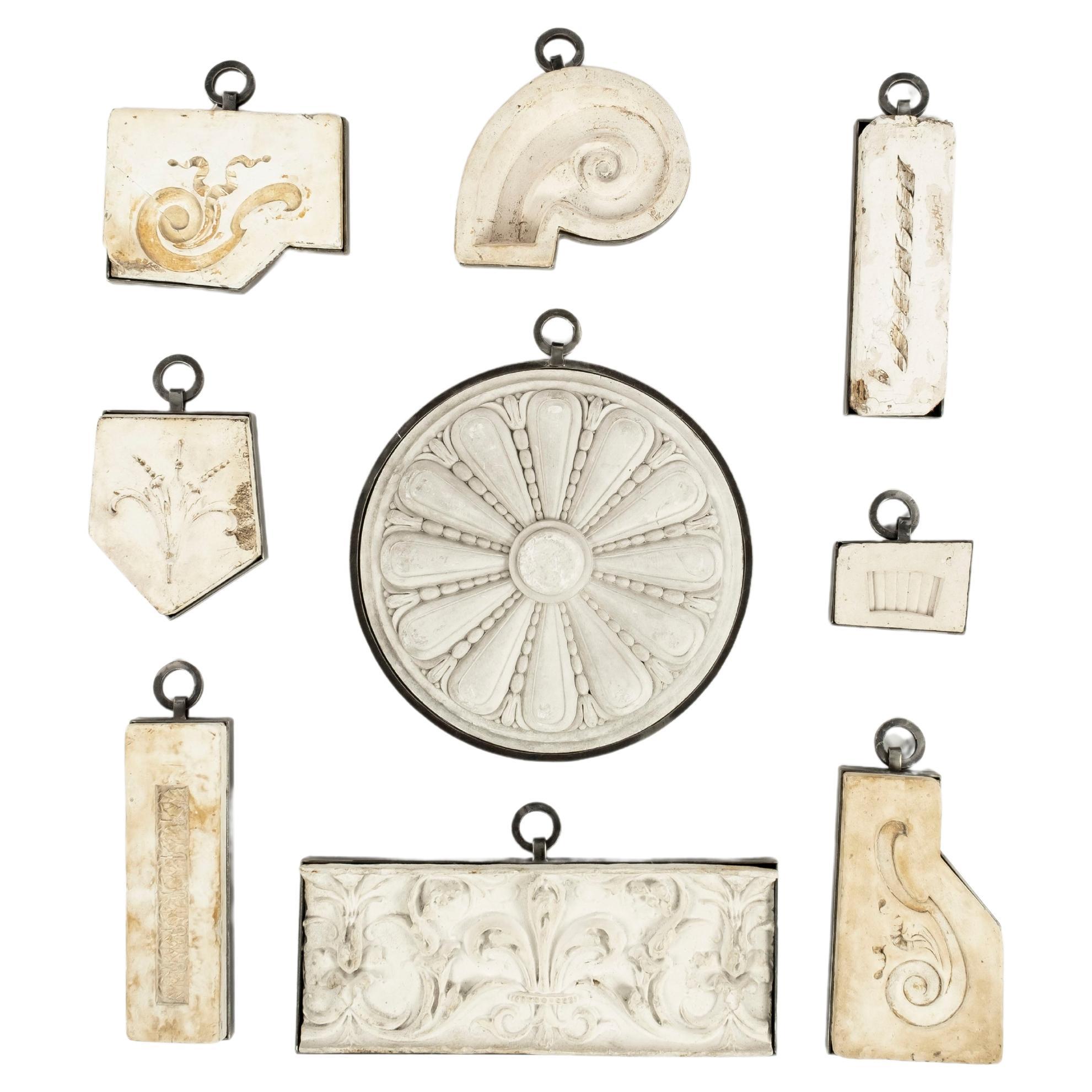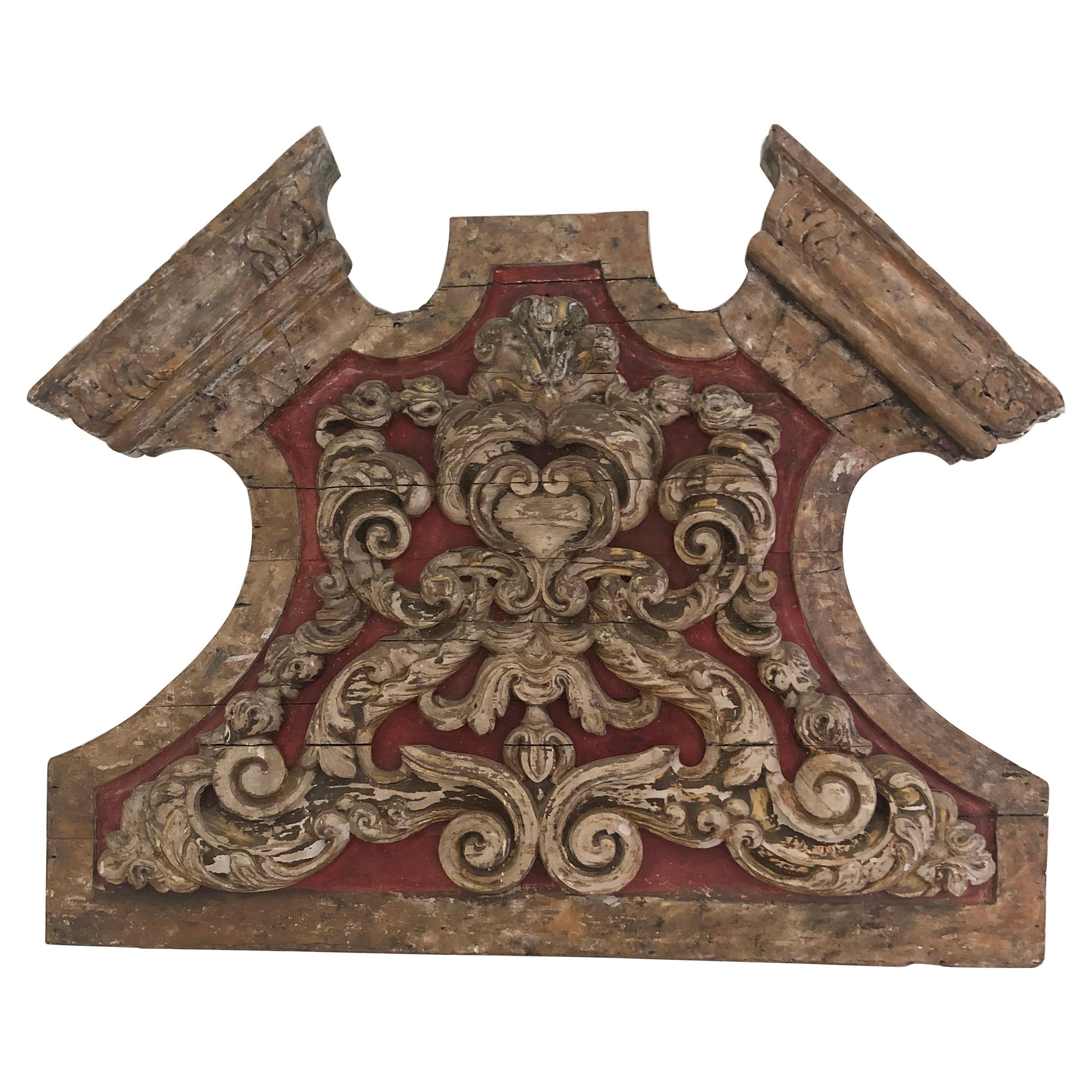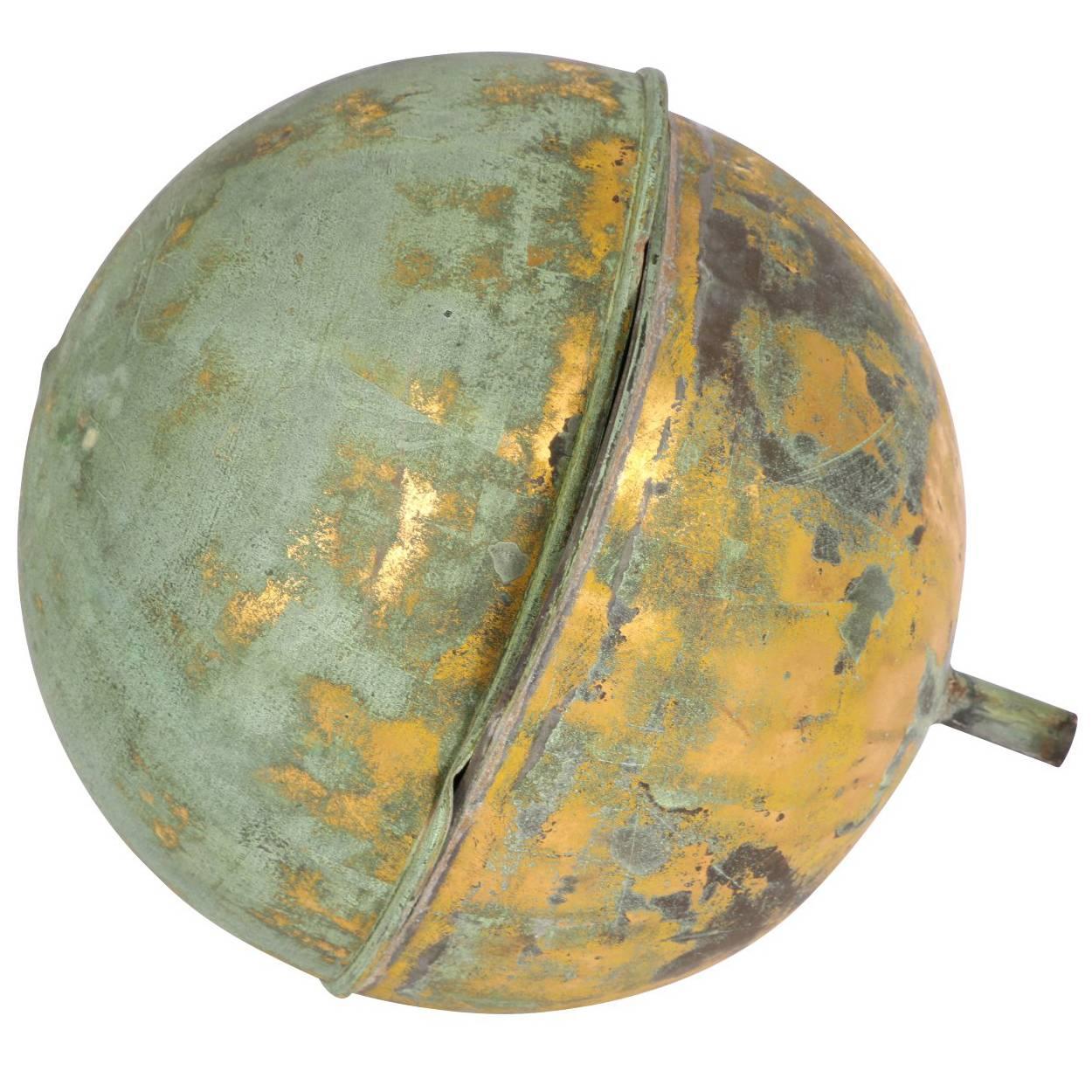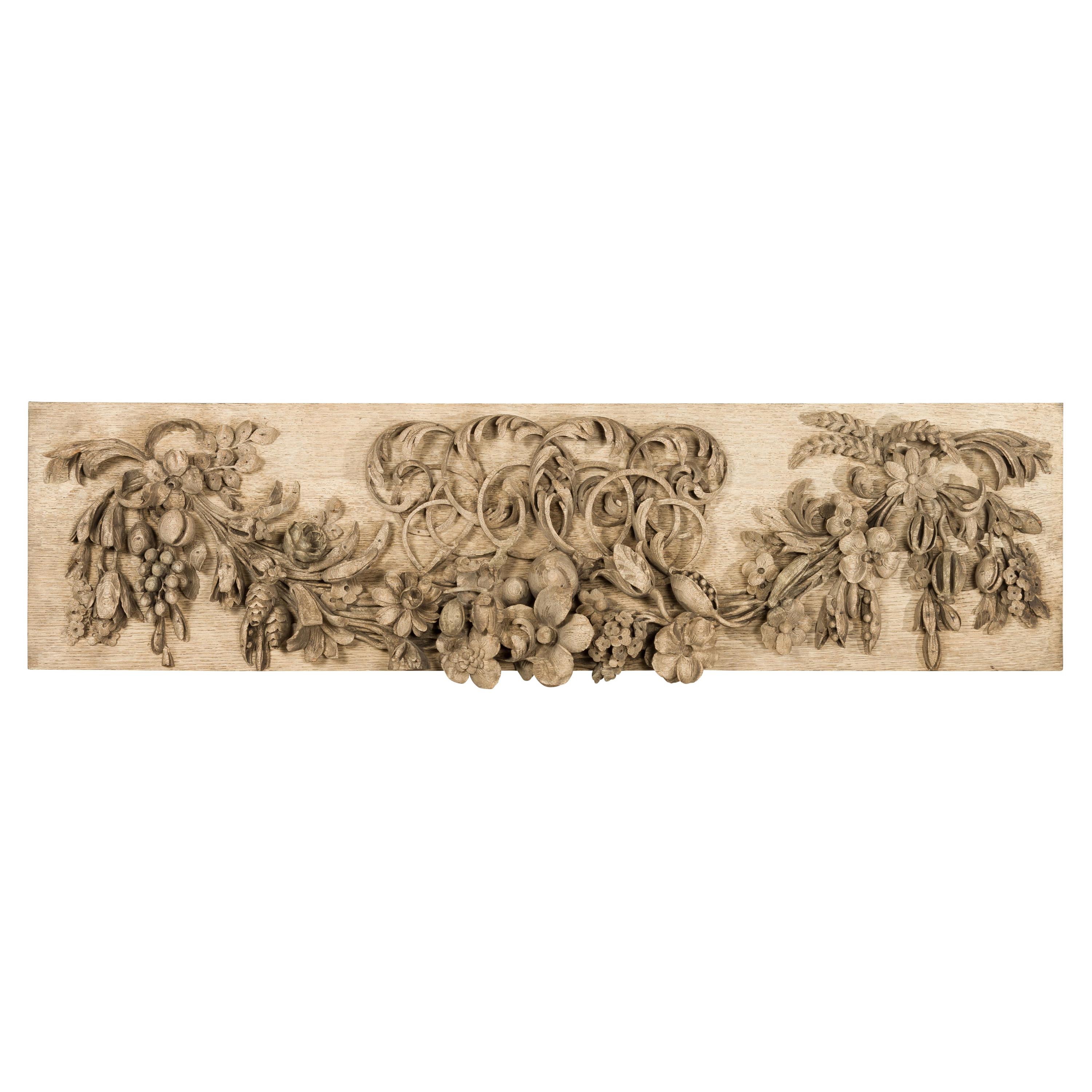Items Similar to Southeast Asian Openwork Architectural Fragment with Garuda-Form Finial
Want more images or videos?
Request additional images or videos from the seller
1 of 20
Southeast Asian Openwork Architectural Fragment with Garuda-Form Finial
About the Item
This unusual carving once graced the exterior of a Thai government building and bears the symbol of the King; a garuda. All national government buildings are in effect royal buildings and bear the image of “Krut” the supernatural protector of kings. The piece is carved from Teak, and covered in polychrome natural pigments. The dominant color is yellow, the color of the King, and often used as a substitute for costlier gold. The piece is of Northern Thai origin and dates to the early 19th century.
- Dimensions:Height: 153.5 in (389.89 cm)Width: 6 in (15.24 cm)Depth: 6 in (15.24 cm)
- Materials and Techniques:
- Place of Origin:
- Period:
- Date of Manufacture:19th Century
- Condition:Wear consistent with age and use. Minor fading. Wear consistent with age and use.
- Seller Location:Chicago, IL
- Reference Number:
About the Seller
5.0
Vetted Seller
These experienced sellers undergo a comprehensive evaluation by our team of in-house experts.
Established in 1989
1stDibs seller since 2010
408 sales on 1stDibs
Typical response time: <1 hour
- ShippingRetrieving quote...Ships From: Chicago, IL
- Return PolicyA return for this item may be initiated within 1 day of delivery.
More From This SellerView All
- Italian Giltwood Architectural FragmentLocated in Chicago, ILThis grand piece of moulding once framed an entrance or part of an ecclesiastical structure in a great church. Classical elements are seen in the rectangular dentil moulding and flo...Category
Antique Late 18th Century Italian Architectural Elements
MaterialsOak, Pine, Giltwood
- Fragment of a Chinese SignLocated in Chicago, ILThe sign is of Burmese origin, made from teakwood and covered in lacquer and gold leaf. The two legible characters are “Jade” and “Art”. As many carved signs were shop signs, this may have been a jade dealer’s sign...Category
20th Century Chinese Architectural Elements
MaterialsGold Leaf
- Teakwood Architectural Temple PedimentLocated in Chicago, ILThis giant architectural element once graced the pediment of a Northern Thai temple. It is from Chiang, Mai, Thailand and entirely made from Teakwood, which is naturally resistant ...Category
Antique Late 19th Century Thai Architectural Elements
MaterialsTeak
- Impressive Set of Carved Indian Doors with Thick SurroundLocated in Chicago, ILThis monumental carved Indian entrance door is made from Chechum wood and features an impressive and intricate door frame. The frame members immediately adjacent to the doors are eac...Category
20th Century Indian Doors and Gates
MaterialsMetal
- Pediment Wood CarvingLocated in Chicago, ILThis Teakwood pediment carving came from a Northern Thai house. Pediment carvings were part of the traditional architecture system and were found under overhanging roof gables. We know it was a residential roof (and not a temple's) because of the shallow angle. Temple roofs are much steeper and usually temple exteriors were painted, so some pigment would usually remain, particularly towards the top. Thai houses were made from solid teak --walls, roofs, floors; everything. They were always raised on stilts to remain above seasonal flooding, snakes and other forest creatures. The area below the house was used for animals and storage. The Thai architectural wall system (including pediments) always employed heavy beams and thin floating panels. Visually these wall panels are very attractive and richly textured on account of exposure to moisture. Teak is very resistant to moisture and insects, so the lifespan of teak exterior parts can be over 150 years. The antique pediment...Category
Early 20th Century Thai Architectural Elements
MaterialsWood
- Sandstone Wall PlaqueLocated in Chicago, ILThis red sandstone carving was once embedded in the wall surrounding an aristocratic compound. It depicts scholars in a garden, eating and conversing. It came from Shanxi Province an...Category
Antique 18th Century Chinese Architectural Elements
MaterialsSandstone
You May Also Like
- Collection of 9 Antique Architectural Plaster Fragments Framed in IronLocated in Houston, TXCollection of 9 antique architectural plaster fragments each custom framed in iron to facilitate hanging on a wall. 1st Row Dimensions: 9.75" x 1...Category
Antique 19th Century Architectural Elements
MaterialsWrought Iron
- Monumental One of a Kind 19th Century Architectural Fragment Wall SculptureLocated in Hopewell, NJA strikingly large and ornate fantastic 19th century one of a kind architectural fragment from a French monastery having red painted weathered background and sculptural 3 dimensional...Category
Antique 19th Century French Louis XV Wall-mounted Sculptures
MaterialsWood
- 19th Century Asian Architectural FragmentLocated in Vosselaar, BEA 19th century Asian stone architectural fragment. This intriguing sculpture probably had a utilitarian function as a water deposit. As often in China prac...Category
Antique Early 19th Century Chinese Sculptures and Carvings
MaterialsStone
- Gilt Copper Globe Form Architectural FinialLocated in Bridgeport, CTGlobe form made in two parts, with a hollow stem for attachment on the base. Worn gilt, patches of green patina overall, separation around the center seam, ding, all as expected wi...Category
Mid-20th Century Industrial Architectural Elements
MaterialsCopper
- Pair of Japanese 19th Century Ranma Transom Panels with Carved Openwork DesignLocated in Yonkers, NYA pair of Japanese carved wooden ranma transom panels from the 19th century, with carved openwork design, natural patina and distressed appearance. Cre...Category
Antique 19th Century Japanese Architectural Elements
MaterialsWood
- English 19th Century Carved Wooden Fragment with Fruits and Flower GarlandLocated in Atlanta, GAAn English carved wooden fragment from the 19th century, with fruits and flowers garland. Created in England during the 19th century, this horizontal fragment captures our attention ...Category
Antique 19th Century English Architectural Elements
MaterialsWood
Recently Viewed
View AllMore Ways To Browse
Antique Buildings
Building Antique Furniture
Form Architecture
Architectural Piece
Gold Finials
Garden Finials
Garden Finial
Building Finials
Openwork Furniture
Antique Garden Finials
Natural Fragments
Garden Finials 19th Century
Gold Fragment
Used Teak Garden Furniture
Carved Openwork
Royal Teak
Garden Bear
Teak Bear





